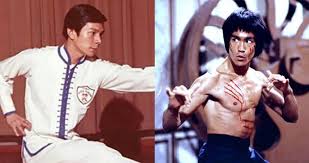A Norwegian adventurer, Roald Amundsen made history when he reached the southernmost tip of the world in 1911 — but he wasn’t done exploring yet.
In 1911, Roald Amundsen, a Norwegian explorer, stood among the snow and ice at the southernmost tip of the world. With his Norwegian expedition, he proudly planted the Norwegian flag into the frozen ground, making history as the first man to reach the South Pole. This was just one of the many achievements of this remarkable explorer.
From a young age, Amundsen was fascinated by polar exploration and dedicated his life to venturing to some of the world’s coldest and most dangerous places. He sailed through the icy waters of both the Northwest Passage and the Northeast Passage, greatly contributing to our understanding of these regions. He also completed the world’s first transarctic flight over the North Pole.
Unfortunately, Amundsen’s passion for exploration led to his untimely death. In 1928, while searching for a lost airship, he and his companions disappeared over the Arctic Ocean, vanishing into the very waters he spent his life studying.
The Boy Who Dreamed Of Being An Explorer
Roald Engelbreth Gravning Amundsen was born on July 16, 1872, in Borge, Norway. From a young age, he knew he wanted to explore the world. According to Royal Museums Greenwich, Amundsen would sleep with his windows open, even during cold Norwegian winters, to prepare for the harsh conditions of his future expeditions. Although he started studying medicine to please his mother, he soon dropped out to travel with Arctic whaling skippers.
Standing over six feet tall and coming from a lineage of seafarers, Amundsen took pride in being called the “last of the Vikings.” Determined to prove his adventurous spirit, he sailed with the Belgian ship Belgica in 1899 on the first expedition to winter in the Antarctic. This experience sparked his subsequent explorations.
In 1903, at the age of 31, Amundsen embarked on an expedition to the ice-choked waters north of Canada. Against all odds, he successfully navigated a 70-foot fishing boat through treacherous routes, becoming the first explorer to navigate the Northwest Passage.
Next on Amundsen’s list was the South Pole.
How Roald Amundsen Became The First Man To Reach The South Pole
In the summer of 1910, Roald Amundsen embarked on an expedition with his ship, Fram. He told everyone, including the Norwegian government and his crew, that his goal was the North Pole. In reality, he aimed for the South Pole, a secret he kept because he knew an Englishman named Robert Scott was also headed there. Amundsen was concerned the Norwegian government might not support a direct challenge to the English.
Amundsen only disclosed their true destination to his crew after passing the Madeira Islands off the coast of Africa. His men agreed to continue, and they pressed on toward the South Pole. Amundsen assured them he had prepared thoroughly, even bringing cold-weather dogs for assistance. Meanwhile, he pointed out that the British expedition lacked dogs and didn’t have the necessary skiing skills, boosting his crew’s confidence.
The race to the South Pole was on between Amundsen and Scott. However, only one would survive to share the tale. After sailing 16,000 miles, the Fram reached the Bay of Whales, Antarctica, in January 1911. Amundsen’s team prepared for their final push, noting that the English camp was nearby. Undeterred, they continued their preparations, sometimes sharing meals with the English.
On October 18, 1911, with a strong head start and aided by their dogs, Amundsen and his team began their journey to the South Pole. As they traveled across the ice, some crew members worried they might find Scott’s flag already there. Their fears were unfounded. On December 14, 1911, they reached the southernmost point of the Earth with no trace of the Union Jack. They planted the Norwegian flag and celebrated by opening a bottle of champagne kept warm by expedition cook Adolf Lindstrom.
Sadly, Scott and his team arrived 33 days later, on January 17, 1912, to find that Amundsen had beaten them. The Englishmen were not only disappointed but also faced a tragic fate; they died on their return journey on March 29, 1912. Amundsen, moved by their courage, respected his English competitors deeply, knowing the immense dangers they had faced.
Reaching the South Pole was a great achievement, but Amundsen’s thirst for exploration continued.
Roald Amundsen’s Final Adventures And Death
Reaching the South Pole was not the end for Roald Amundsen. He went on to navigate the icy waters of the Northeast Passage and aimed to be the first to fly over the North Pole. His first attempt in 1925 missed the mark by 150 miles, but he succeeded the following year, despite American explorer Richard E. Byrd seemingly beating him. It wasn’t until 1996 that it was revealed Byrd had actually turned back before reaching the North Pole.
By 1928, when he died, Amundsen had achieved many honors. He was the first to traverse the Northwest Passage, the first to reach the South Pole, the second to traverse the Northeast Passage, and possibly the first to fly over the North Pole. Throughout his life, Amundsen never lost his love for the Arctic. In 1928, he said, “If only you knew how splendid it is up there. That’s where I want to die,” according to PBS.
His words proved prophetic. In June 1928, while searching for survivors of the Italia, an airship that sank en route to the North Pole, Amundsen’s plane disappeared. He and his companions are believed to have died in a crash over the Norwegian Sea, their final resting place still unknown.
Perhaps future explorers, inspired by Roald Amundsen, will one day uncover his lost body in the depths of the ocean.
After learning about Roald Amundsen’s story, you might be interested in Peter Freuchen, another Arctic explorer known as the real “most interesting man in the world.” Then, check out these vintage photos that show what exploring Antarctica was truly like.





